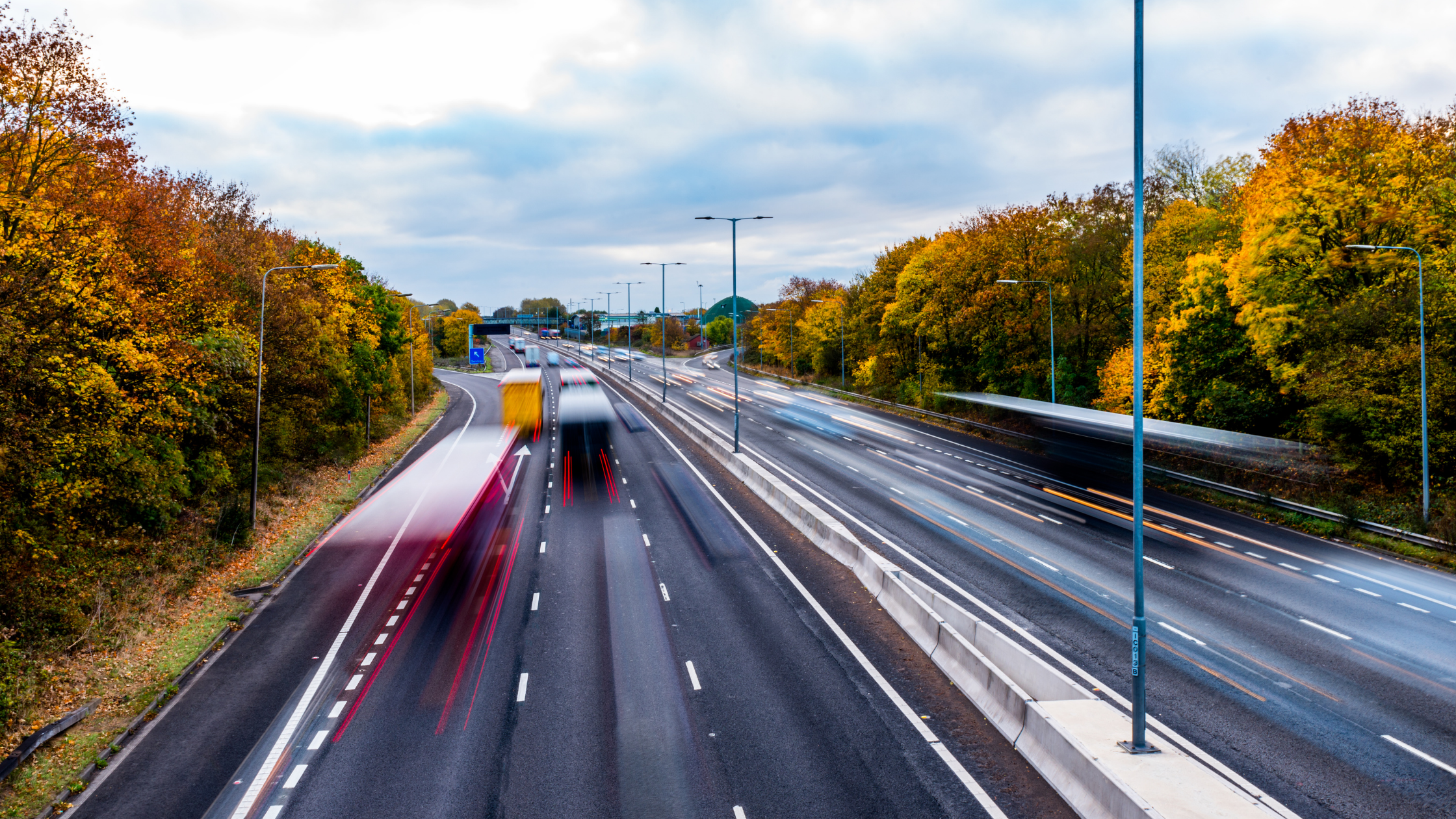Off the back of almost two years of restrictions and some levels of anxiety around travel, many drivers will be heading back onto the motorway for the first time in a while in 2022.
Whether you’ve been driving for years or it’s your first time on the motorway, faster roads with different lane layouts can be confusing. To help you relax on the motorway this festive season, we’ve popped together a bumper guide to motorway lanes.
what do the lanes on the motorway mean?
Typically, motorways have three lanes – left, middle and right, or outside, middle and inside. (You might have heard people refer to them as “fast lane” or “slow lane”. This is incorrect and is not the case.)
The most important thing to note is that all lanes on a motorway have the same speed limit – unless otherwise notified, this is 70mph.
When you enter the motorway, the left hand lane, lane one, is for routine driving. Lanes two and three are for overtaking only.
You should aim to keep to lane one unless there’s a build-up of slow-moving vehicles in that lane; in which case, you can move across to the next lane to overtake.
You shouldn’t stay in lanes two or three any longer than necessary; if you’re doing your routine driving in these lanes, you are likely to hold up traffic by stopping other drivers from being able to overtake.
The police can pull you over if you use the lanes incorrectly, causing a danger to other road users, for example, if you are driving in the middle lane consistently.
Things to remember:
- Where there are only two lanes, the same rule applies: left for routine driving, right for overtaking.
- Where there are four lanes, the same rules also apply: left for routine driving, all lanes to the right for overtaking.
- A motorway on a steep hill may have an additional crawler lane for heavy vehicles. These lanes will be identified and unless you are in the correct vehicle, you should avoid driving in this lane. Heavy vehicles that lose speed on a gradient are segregated from other traffic to allow the rest of the traffic to flow more freely.
what is a hard shoulder and how do I use it?
On the left hand side of a motorway, you will often find a narrower lane, separated from the main carriageway by a solid white line. This is a hard shoulder.
If you have to pull over onto the hard shoulder of a motorway, remember to check your mirrors as normal, indicate before turning in. Once in the hard shoulder, pull up safely and bring the car to a halt – do not drive down the hard shoulder.
- Keep the wheel turned to the left, so your car can’t accidentally roll into traffic on the main carriageway.
- Ensure your hazard lights are on to alert other vehicles that you are stopped there.
- If it’s dark, use your sidelights as normal.
- If it’s foggy, use your fog lights as normal.
If possible, exit the vehicle and find a safe space to gather with your passengers away from traffic. Use your phone to call the emergency services or for recovery as soon as possible; if you aren’t able to use your phone, walk along the hard shoulder until you find an emergency phone. Take note of your surroundings and the motorway location signage to determine your location.
The only time that the hard shoulder is different is when you are travelling on a smart motorway – read more about those here.
when can’t i use a lane?
If the overhead signage alerts you to a lane closure, you must move out of this lane as soon as it’s safe to do so. You will usually be alerted by the overhead motorway signage, which will display a red X above any closed lanes.
On some routes, cameras are in place, and if you’re caught flouting the rules, you could face a fine and/or points on your driving license.
leaving the motorway
When it comes to exiting the motorway, you’ll usually be doing this via a sliproad, which will be to the left hand side of the motorway, off the first lane. Try to minimise danger by getting into the correct lane early – motorway signage will alert you when you’re approaching a slip road, and sat nav will usually tell you which lane to be in with a couple of miles to go.
if you need to, take a break
If you do find yourself flustered or confused by lanes or traffic that’s moving faster than you’re used to, make sure you take regular breaks to breathe, get some fresh air and replan your route. You can use our route planner to plan a journey with regular rest stops in, giving you plenty of opportunity to take a break from the road.







